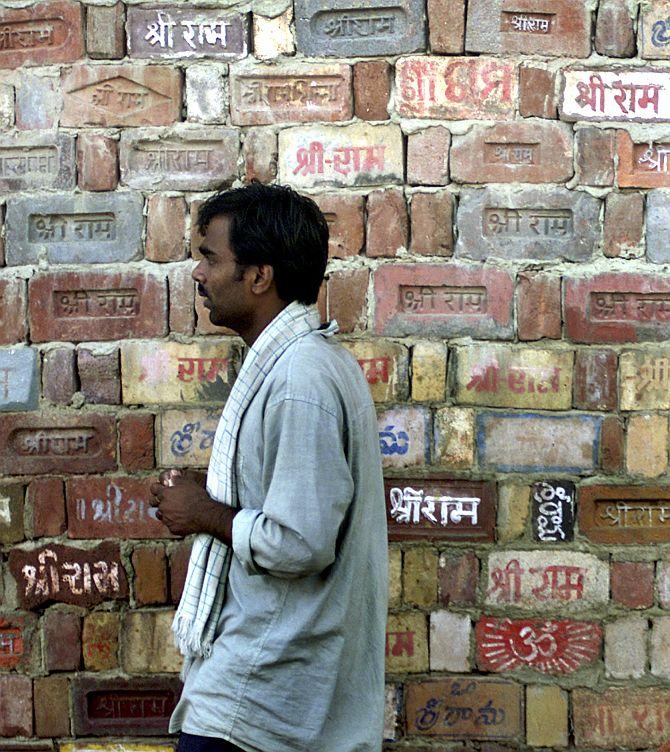
Ram Bahadur Rai, editor of Hindi magazine Yathawat and an expert on the Ram Janamabhoomi movement, speaks to Gopal Krishna, how then prime minister P V Narasimha Rao had a plan to construct a Ram temple in Ayodhya and what transpired in the days leading up to and post December 6 1992 in the second and final part of this interview.
Part 1: 'Digvijaya should be asked about his role in Ayodhya under Narasimha Rao'
You have interacted with prime ministers like V P Singh and Chandrashekhar. What was their approach to the issue of construction of temple in Ayodhya? You have written about your discussion with V P Singh in your book Manzil Se Jyada Safar.
V P Singh’s government was formed with the support of the BJP and the Communist parties. The shilanyas at Ayodhya had happened on November 7, 1989 when Rajiv Gandhi was the PM. At that time Congress leader N D Tiwari was UP chief minister and Buta Singh was the Union home minister. This was the result of an agreement between Rajiv Gandhi and the VHP. On December 2, 1989 V P Singh came to power.
In between, the Babri Masjid Action Committee was formed in 1986 by Syed Shahabuddin, a Janata Dal MP. A tripartite negotiation commenced in which the VHP, Mulayam Singh Yadav, Bhairon Singh Shekhawat used to participate besides members of the Babri Masjid Action Committee. A formula had come out during V P Singh’s regime with the help of or at the intervention of (West Bengal Chief Minister) Jyoti Basu for the solution of the Ayodhya issue because L K Advani had launched his rath yatra. But in the end the compromise formula did not work.
After Singh, Chandrashekhar came for four months. Chandrashekhar had almost clinched a solution on the temple issue. Advani had stated in the Parliament that had the Chandrashekhar government remained in power for few months the solution for temple issue could have been found. Chandrashekharji used to say that the moment they almost reached a compromise, Rajiv Gandhi realised that he would solve the temple issue and ensured the fall of his government.
After that Rao came to power, he got a trust made but the trust did not get the land. By then elections were around the corner. Rao expected to return to power but failed.
After that H D Deve Gowda and I K Gujral became prime ministers. During 1996-1998, there was no effort made for any agreement with regard to the temple issue.
During 1998-2004, quite late I think in 2003, talks commenced on the temple issue. This dialogue happened with Muslim leaders like Maulana Syed Abul Hasan Ali Nadvi, or simply Ali Mian, the former president of the All India Muslim Personal Law Board and Jayendra Sarwaswati, Shankaracharya of Kanchi. There were dialogues on but they were behind the scenes.
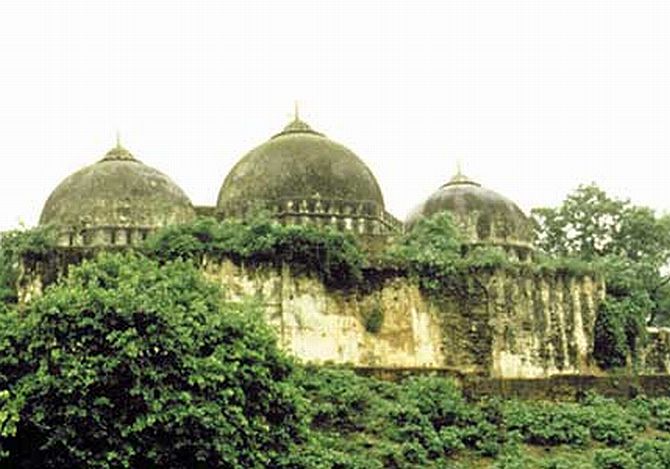
Did anything come out of these talks?
No, the Kanchi Shankaracharya went to meet Ali Mian who used to live in Rae Bareli. I have also gone there with journalists Chakravarty, Joshi and Mishra in 1991. Before we met Ali Mian, Kalyan Singh, then UP chief minister who had come to know about our imminent visit had invited and met us and suggested that we should also go to Ayodhya and Faizabad as well. Kalyan Singh spoke to Surendra Kumar, the Faizabad commissioner in this regard. We did go there in 1991 after our visit to Ali Mian’s place in November 1991. Ali Mian gave us lot of books, which is still in my library. We saw the Ayodhya temple from behind for the first time. In 2003 during A B Vajpayee’s regime Jayendra Sarswati and Ali Mian had talks to come up with a formula but it was not successful.
What impact did the findings of Archeological Survey of India about the remains of Hindu temple and Buddhist temple at the disputed site have on the campaign for temple construction?
After the demolition of Babri mosque, the ASI undertook excavation. It came to light that the Babri Masjid was constructed on the pillar of a temple.
Historians who were divided into two parts on the issue, one part of these historians held that there was no proof of temple at the site. But the ASI found that there is sufficient proof. The 2010 judgment has come on the basis of those ASI findings.
It is significant to know what happened 15 days prior to December 6, 1992 and 15 days after the event? What were the outcomes of negotiations that were going on?
In short, in 1992, intense talks between the government and the VHP from July 1992 to December 4, 1992 continued at different levels. There were four levels. One level was the one in which these three journalists were involved, second, dialogue between the government and the VHP, third was between the government and the BJP and fourth one was between central government and the BJP-led state government.
As far as I know, these three journalists never contacted VHP because they knew its role. They knew that the matter can only be solved at the level of the BJP and RSS leaders with their intervention. On three occasions, I was with them when talks happened with Vajpayee, Advani and Rajju Bhaiya. They realised that the talks with BJP leaders will not work. They understood that the ultimate decision will be taken by the RSS.
...
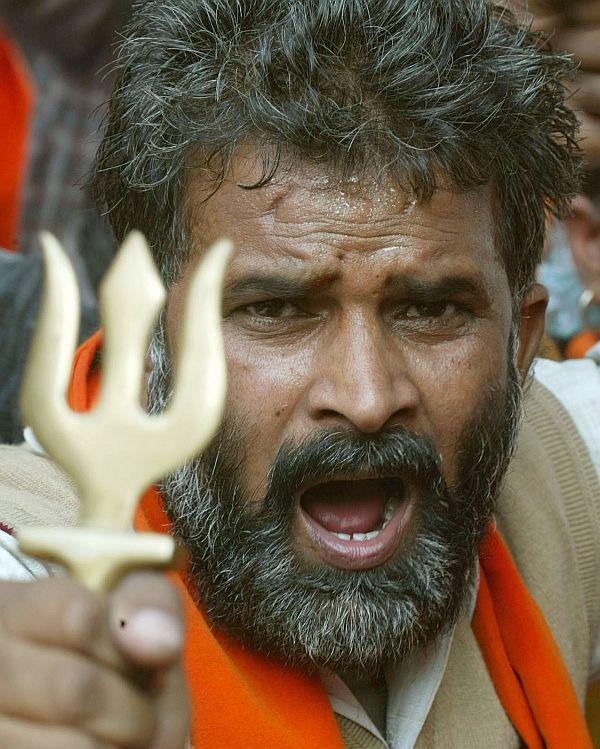
Prabhash Joshi had asked me get an appointment from Rajju Bhaiya for these three journalists. I talked to Rajju Bhaiya’s secretary, Shiv Narayan Singh and ensured that the talks happened as they considered me as a friend and not as journalist. I used to have easy entry in Jhandelwalan office of the RSS even when it used to be out of bounds for media. I had suggested to Rajju Bhaiya that all the RSS office bearers in Delhi should be asked to speak to these journalists. The conversation continued for long hours.
There was another level at which the government was making efforts. On December 4, 1992, the then IB Director met Rajju Bhaiya on behalf of Narasimha Rao. This fact must be there in the books that have come out on the issue. The talks finally broke down on December 4.
Rao’s proposal was that the Kar Sewa that was supposed to happen on December 6 should be stopped but Rajju Bhaiya did not agree to it. What needs to be understood is that in the long talks with the RSS, the VHP, Rao wanted the Kar Sewa to be stopped and dialogues to continue. The problem before the RSS and the VHP was that during Rao’s tenure the Kar Sewa was postponed several times earlier. Had Kar Sewa been stopped even this time, the credibility of the temple movement would have suffered. Andolan ki naak kat jaati, because the RSS and the VHP had used their full energy and appealed for the Kar Sewa.
BJP senior leaders L K Advani and Dr Murli Manohar Joshi were on their rath yatra. Uma Bharti, Sadhvi Ritambhara were part of the movement. Till the evening of December 5, some 2.5-3 lakh people had gathered there. Besides RSS and VHP people even those who were not affiliated with them actively had turned up in large numbers. Some had even walked on foot to reach there.
Rao wanted to destroy the credibility of the RSS, the VHP and the BJP forever this time. The difficulty for the parivar outfits was that they had appealed to the people and now they could not have backtracked. No one had full control on the people who had gathered there.
It is a matter of research as to what happened on December 6. Was it the mob which did it or was it part of planning? It is my belief that it was part of the pre-planning of some VHP people. I know the person that who had planned it. But the Central Bureau of Investigation which was asked to probe could never reach him. The CBI reached and charge-sheeted only known faces. It could not reach the mind behind this event. On December 6, it happened by afternoon.
Now there are two versions about it. Kuldip Nayar’s book Beyond the Lines narrates that Narasimha Rao kept sitting for his worship when the kar sevaks began pulling it down and rose only when the Babri Masjid was demolished. He got up only when the last stone was removed. This version is untruthful.
The person who told him did not know about it. Rao has written about what he did on December 6 in his book. How he called the concerned people at his residence at 3, Race Course. But I am narrating what he has not written in his book.
According to Congress Rajya Sabha MP, H S Hanspal who was very close to Rao, the prime minister remained sitting in the lawns on the back of his residence on December 6. R K Khandekar, Rao’s secretary used to come and brief Hanspal at regular intervals. When the masjid was demolished, Rao got up from his chair in the lawns.
Whatever Rao did as per his book he did only after the demolition. Even what his media advisor has written is corroborative of Rao’s version, it is not contradictory. He has referred to the assurances from leaders. Khandekar remained with Rao till the latter’s death in 2004.
...
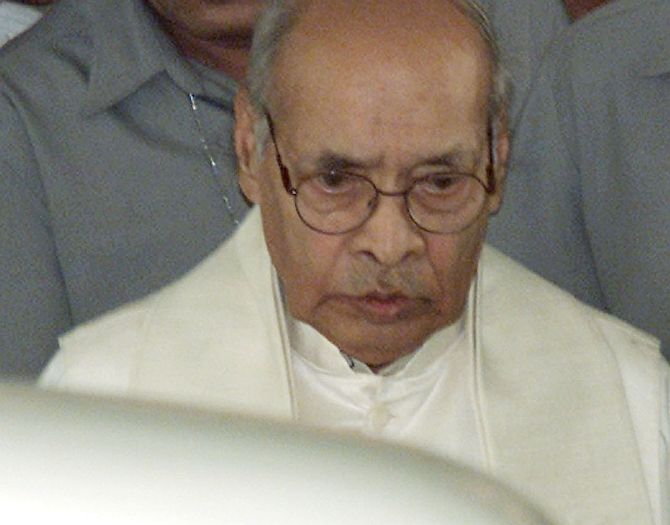
What was Narasimha Rao’s first reaction after the demolition of the Babri mosque? He is believed to have said that the BJP, the RSS and the VHP betrayed him.
Rao was an experienced and wise person. When the talks broke down on December 4, he understood what was going to happen to the religious structure on December 6. I think even Rao wanted this to happen. He was a political person. He wanted to snatch the temple issue away from the BJP, the RSS and the VHP. The rest is a matter of assumption. It is a fact that Rao had never thought of becoming the prime minister.
The Congress had not given him ticket to fight the elections in 1991. His politics had ended. He had almost shifted to Andhra Pradesh. He used to live at 9, Motilal Nehru Marg before becoming the prime minister and after that. But suddenly after the assassination of Rajiv Gandhi on May 21, 1991 because he was the tallest leader in the Congress after Rajiv Gandhi, he was made the president of Congress and then the prime minister.
I saw Narasimha Rao in Parliament from my seat no 21 exactly above Speaker’s chair in the Parliament’s press gallery that he used to remain unruffled amidst hullaballoo unlike Manmohan Singh. It was difficult to read his face. He accepted December 6 as inevitable. Whatever he has written in his book is for public consumption.
Prasad, in this book, refers to an assurance by the BJP leaders in the matter of the Chalo Ayodhya campaign that it would remain peaceful. He was with the prime minister. Rao was deeply concerned about the law and order situation. He has explained the role of the prime minister and why President’s rule was not imposed in Uttar Pradesh. He reveals that Narasimha Rao was watching TV to comprehend the goings on in Ayodhya on December 6.
After that Justice Liberhan inquiry commission was constituted which submitted its report on June 30, 2009, what were its findings?
Rao spoke to Naresh Chandra, former cabinet secretary and on his suggestion this commission was constituted. They understood that the commission stretched itself for quite a long time. Perhaps the report has not been tabled in Parliament.
...
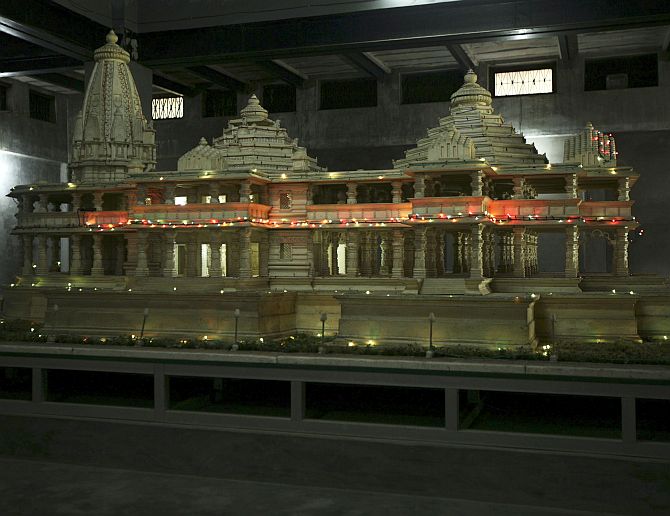
What was the political fallout of the December 6, 1992 event. Who gained and who lost as a consequence? Political slogans like Garibi Hatao and Mandir Banao were never fulfilled. How do unfulfilled promises and slogans adversely impact the prestige of political parties?
The event of December 6, 1992 changed India’s politics. It had two contradictory consequences. One was that Hindutva politics came to the centre-stage, everything else went to background. Socialism, Communism, the middle path of the Congress, everything which was going on in politics since 1947 till 1992, this event overturned this. Ye mera mat hai. December 6 ko jo kuch hua mein usko uchit manta hu. Ye hona hi tha. Ye apariharya tha. Jis tarike se hua wah galat hua. (This is my view that December 6 was appropriate. It was bound to happen. It was inevitable. But the way it happened was not appropriate.)
I spoke to Atal Bihari Vajpayee on December 6 between 9.30-10 pm on the phone. I met and talked to him that night. Vajpayee issued the statement, which I had written, some 15-16 sentences on his notepad. He asked someone to bring some sweets for me but I said this is not the occasion for sweets. He asked me as to what happened there in Ayodhya. Kalyan Singh was saying that he was also not told till 6 pm. I told him that December 6 has presented an occasion to turn it into a movement.
I asked him to issue a statement the next day advising the kar sewaks and leaders present in Ayodhya to own the act of demolition of Babri mosque on affidavit nahi to December 6 kalank ki tarah peecha karega (else December 6 will haunt like a stigma). Vajpayee agreed to spread this idea but decided not make this statement. He tried for it but he did not succeed. Had some 1 lakh or 1.5 lakh people given that affidavit it would have created a new kind of movement.
Because Muslims were not ready for it earlier, they are not ready now and they are unlikely to be ready in near future, as a reaction, terrorism took birth. The right thing would have been that the Muslim leaders should have accepted that this is not a matter of temple and land but it is a matter of rashtriya akansha (national desire).
How is the issue of construction of temple relevant for Bangladesh and Pakistan? What impact does it have over there?
Do not include Bangladesh in it. Pakistan is a terrorist state. This event helped the aim of Pakistan to promote terrorism. Bangladesh is not in this category. It keeps changing like under the leadership of Sheikh Hasina. There is a conflict which is on since the birth of Bangladesh. When there is a different party in government then Pakistan’s Inter Services Intelligence becomes active over there. It is more relevant for Pakistan.
Both the Congress and the BJP have similar approach on the issue of construction of temple either in public or private. Is it true or not?
Till the arrival of Sonia Gandhi, it was the same. After her arrival it has changed.
...
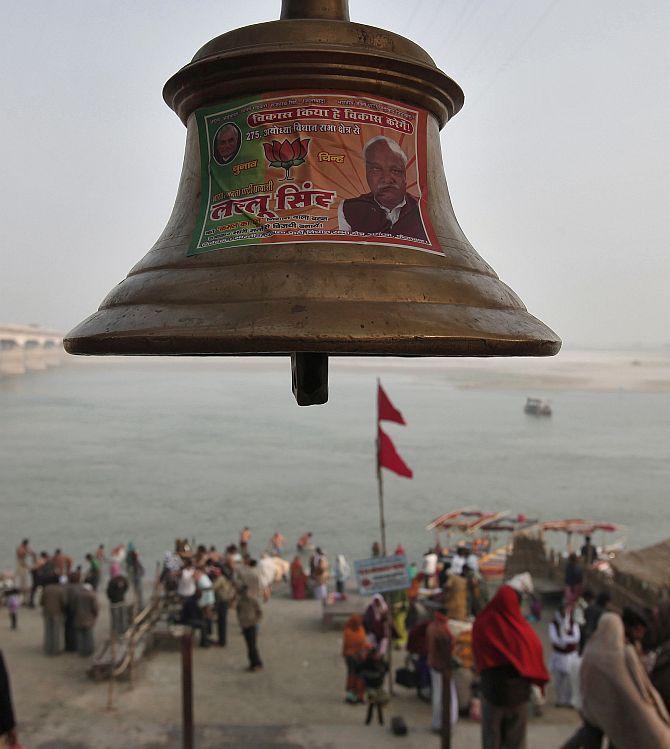
Is it that what started from Somnath temple has continued till P V Narasimha Rao’s plan for construction of the temple?
The mainstream of the Congress was always in favour of temple from day one. Jawaharlal Nehru used to keep himself above it. But Somnath temple was constructed during his tenure. His minister K M Munshi got this temple constructed. He was responsible for the temple construction. It was constructed by the government of India.
Munshi was ready to resign but not give up his work of temple. After Sardar Patel’s death, President Dr Rajendra Prasad inaugurated the newly-constructed temple. The mainstream of the Congress was supportive of temple either implicitly or explicitly.
How do non-BJP and non-Congress parties especially the Left and socialist parties in particular look at the issue of construction of temple in Ayodhya?
This is a group which has lost its political path. The secular line which is there in our country is based on the wrong understanding of secularism or is based on western secularism. Secularism means Sarv Dharam Sambhav. But here people who are secular are making untruthful propaganda into their principled position.
Since 1984, the Left historians have raised flags and have been arguing that there is no proof of temple at Ayodhya where the mosque was constructed. But in 2010, when even the court ruled that there was temple, some historians were proved right, although, they do not have evidence for it but there is circumstantial evidence which is spread all over the country. Like the Gyanvapi mosque, it is a mosque which was converted into a temple. It is either due to the political compulsion or ignorance or misunderstanding of history of these groups.
How do the poor benefit from having a mosque in Mecca, a church in the Vatican and a temple in Ayodhya? How are the exploited masses beneficiaries from it?
See, a mosque, a church and a temple are part of Dharm Tantra. Dharm Tantra is a Satta (state) in its own right. The poor are not in its agenda. The spread of Dharm Tantra alone is in its agenda. For the poor there is Rajya Tantra. In our country there was a system of keeping the king under dharma but that system is not there for 1,000 years.
What did VHP expected to gain from its planned 84 Kosi Yatra during August-September 2013? What has it gained and lost from it?
Yathwat has published an interview of the VHP’s Ashok Singhal in this matter. Besides that my impression is that VHP has been trying to get a temple constructed there. For that they made this effort to rejuvenate the movement. But there is a question mark on the momentum it can gain the intensity of 1991-1992.